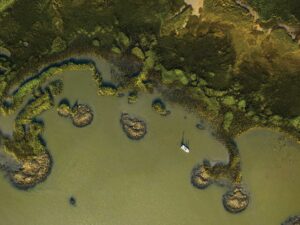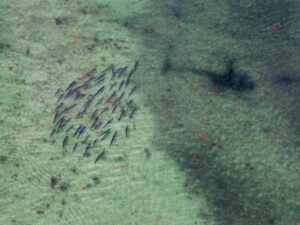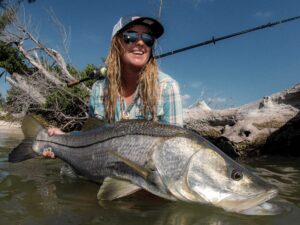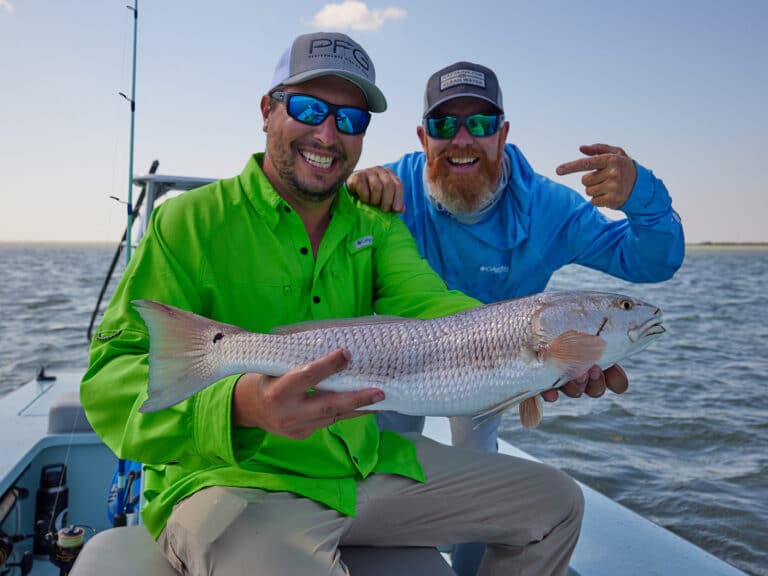Light the fireworks and fire up the brass band, July fishing is hot and anglers are celebrating from coast to coast. Warm water, long days and summer heat invite anglers to chase inshore and offshore trophies. As an added bonus, July offers a reprieve from the turbulent spring weather and impending hurricanes in late summer and fall.
Quicklook: Best Places to Fish in July
- Best for the Northeast: Striped Bass
- Best for the Mid-Atlantic: Flounder
- Best for the Gulf Coast: Red Snapper
- Best for the West Coast: Rockfish
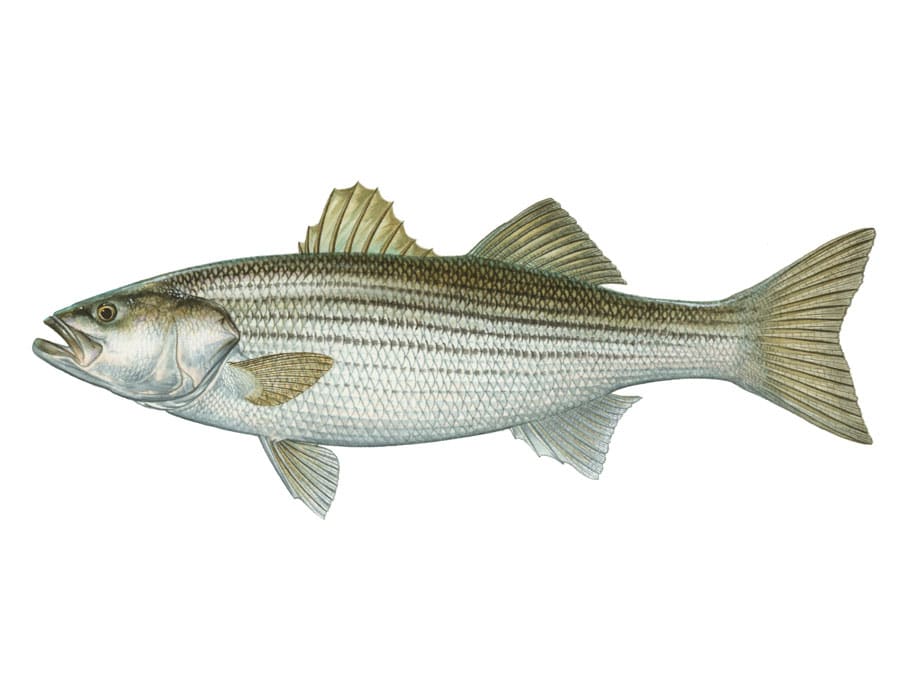
Northeast Striped Bass Fishing
Warm, calm weather and an abundance of bait make July one of the best months for striped bass off Montauk. Tidal currents ripping around the end of Montauk Point offer predators an ambush point to suck up a smorgasbord of menhaden, sand eels and squid. The rule of thumb is to fish the north side of the point on the outgoing tide and the south side on the incoming tide. I also find fish on pinnacles, east of Montauk.
Feeding frenzies on the surface invite me to throw topwater lures for stripers and bluefish. For spinning tackle, I use a 7-foot rod and 5000-size reel spooled with 25-pound braid, 30-pound fluorocarbon leader and a large cup-faced popping plug. When the fish are deeper, I switch to a ¾- to 2-ounce soft plastic paddle tail.
For fly gear, I go with a 9- to 10-weight fly rod and intermediate line with a 6-foot leader of 35-pound fluorocarbon leader. I like a big Deceiver fly with bucktail as a base topped with Squimpish hair for more action. When the stripers are shy of the fly, I’ll tease them up with a spinning rod and hookless popping plug. It’s a classic bait and switch technique for striped bass. The striper population is healthy off Montauk and I expect a great summer of fishing. —Captain Tim O’Rourke, Montauk Point Fly Fishing, Montauk, New York
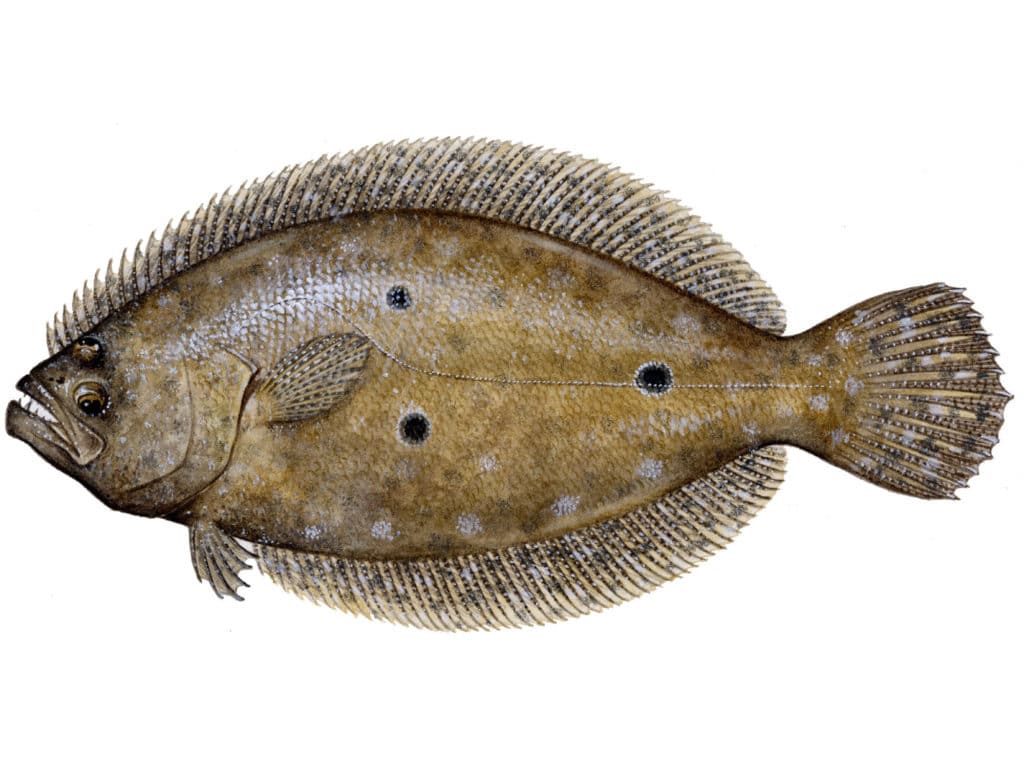
Mid-Atlantic Flounder Fishing
Through the summer, I’m fishing for flounder on ocean wrecks and reefs from five to 28 miles offshore. I like to drift over the structure while bouncing a tandem bucktail or three-way rig. If the wind and current is strong, I drag a drift sock to slow my drift. On calm days, I use my trolling motor to slowly maneuver my boat around the wreck. When the wind and current are opposing, I use my main engine to control the direction of my drift.
The key to catching flounder is fishing deep in the wreck without getting snagged in the structure. My flounder rig consists of a two- to three-ounce bucktail with a smaller teaser bucktail tied two feet above the heavier bucktail. To draw bites when the current is slow, I’ll switch to a two-hook bottom rig. On days when the current is strong, I like a three-way rig with an 18-inch dropper to an eight-ounce sinker and a four-foot trailer to a squid skirt, spinner blade and Kahle hook baited with a strip of squid or bluefish.
Flounder fishing is exciting and it takes a fine touch and quick reactions to hook a flat fish nibbling on my bait. The big payoff is tasty flounder fillets at the end of the day. —Captain Chuck Cook, First Light Charters, Lewes, Delaware
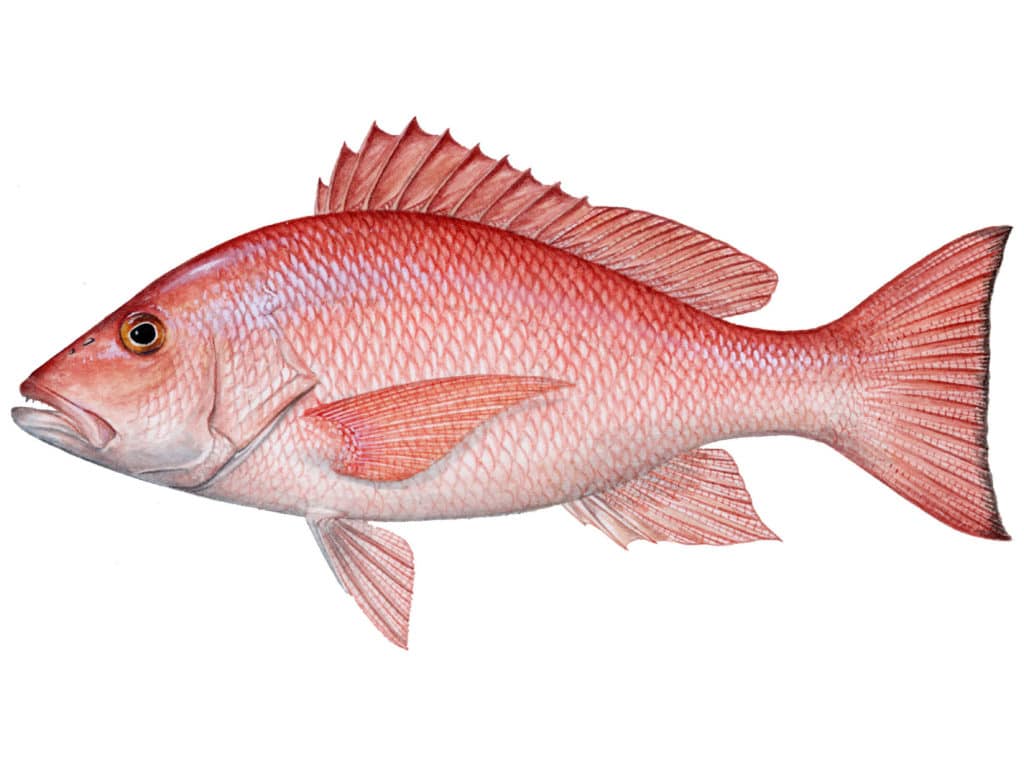
Gulf Coast Red Snapper Fishing
After years of restrictive regulations, red snapper season is wide open on the Gulf Coast. July weather is hot and calm, so everyone wants to target red snapper. We also catch grouper, snapper and triggerfish along with wahoo, king mackerel, dolphin and cobia. I target wrecks, reefs and hard bottom in 90 to 180 feet of water 35 to 60 miles offshore. I use the trolling motor to hold the boat over the structure. Then, I chum with cut bait to bring fish to the boat.
For grouper and red snapper, I use an 80-pound monofilament leader, an eight- to 10-ounce sinker and three-foot leader with an 8/0 hook. I bait the hook with a chunk of mackerel or a live pinfish. Bait presentation is critical — if the bait is spinning the fish will not hit it. I start with the bait hooked through the head. If I miss bites, I’ll hook the bait through the tail.
For surface species like wahoo, dolphin, cobia and king mackerel, I use a live bait rig with No. 6 wire, 4/0 treble hooks and a live cigar minnow. While we’re fishing the bottom, we keep a live bait swimming in the chum slick. Bottom fishing is best on the first and last quarter of the moon. On the full moon, night fishing for mangrove snapper is excellent. —Captain Joel Weir, Reel Integrity Charters, Panacea, Florida
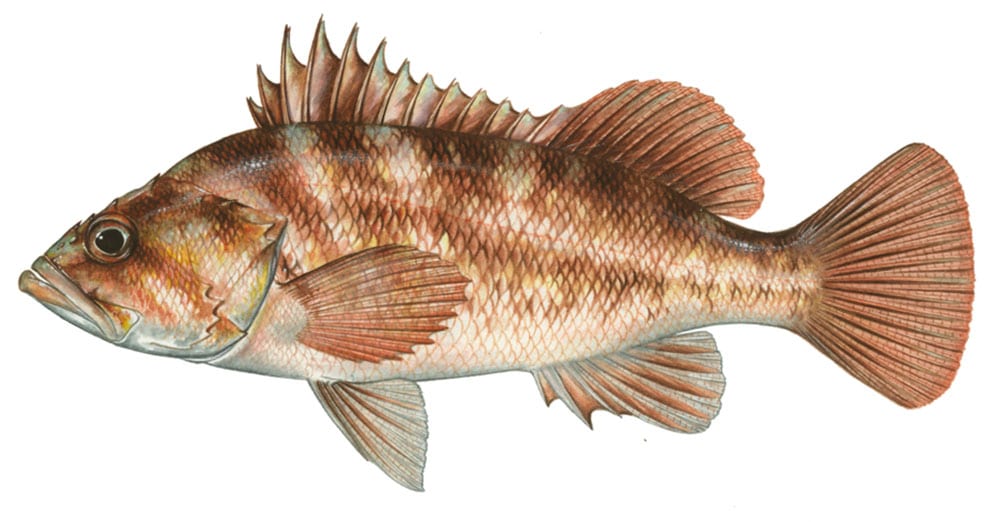
Pacific Coast Rockfish Fishing
With inshore waters open to ground fishing, our first choice is targeting rockfish and ling. On rough days, we head to San Francisco Bay to catch striped bass and halibut. We’re rockfishing in water up to 90 feet deep, so the ride is shorter and we stay closer to land. Anglers catch rockfish using a medium-heavy boat rod, 40-pound braided line and a shrimp fly rig baited with pieces of squid. Fishing is simple, drop the rig to the bottom and wait for a rockfish or cabezon to bite.
The real prize is catching a ling cod. To catch one of these hard-fighting, tasty fish use a medium heavy casting combo to fish a large swimbait. Cast out the swimbait and let it sink to the bottom, then work it slowly back to the boat. Ling cod are big and mean and they taste delicious. Many times, anglers will catch a hitchhiker. That’s when they hook a small ling cod or rockfish on their rig and a larger ling cod attacks their catch. If you’re careful, and reel up slowly, the larger ling cod won’t let go of the smaller fish and you can land both fish.
When the weather is rough, we fish inside San Francisco Bay for striped bass and California halibut. Striped bass like strong tidal currents and halibut are lazy and prefer less current. For both striper and halibut, we drift over sand flats and fish an anchovy on a three-way dropper rig. With options for nice weather and rough weather, incoming or outgoing tide, July is a great month for fishing. —Melynda Dodds, New Captain Pete Sportfishing, Half Moon Bay/Hyde Street Harbor, California
Where Is the Best Place to Fish in July?
Traveling anglers can escape the summer heat by fishing northern waters. The best place to fish in July is New England and the Pacific Northwest. By midsummer, warm water species have made their way to the northern ends of their migration. Anglers in New England can target trophy striped bass inshore or head to the offshore canyons for tuna and wahoo. On the west coast, cool ocean waters attract bluefin tuna and fire up the halibut and rockfish bite. Best of all, you’ll start the day in a sweatshirt and end with a sunburn.
Where Do Bass Go in July?
As the water warms, cold-water bass head north to escape the heat. Look for bass in famed Northeast bass destinations off Massachusetts, Connecticut, Rhode Island and Maine. Large striped bass hold on near shore rips and boulder fields where anglers target them with light tackle lures and slow trolling tactics.
At What Temperature Do Fish Stop Biting?
Each species of fish has a preferred water temperature. Some species, like striped bass and tautog, want that cooler water. These fish stop biting when the temperatures rise above 60 degrees. Warm water species like redfish and summer flounder are the opposite — they stop biting if the temperature drops below 60. Of course, there are exceptions to the rules, but water temperature is the best guideline to predict fish behavior.


